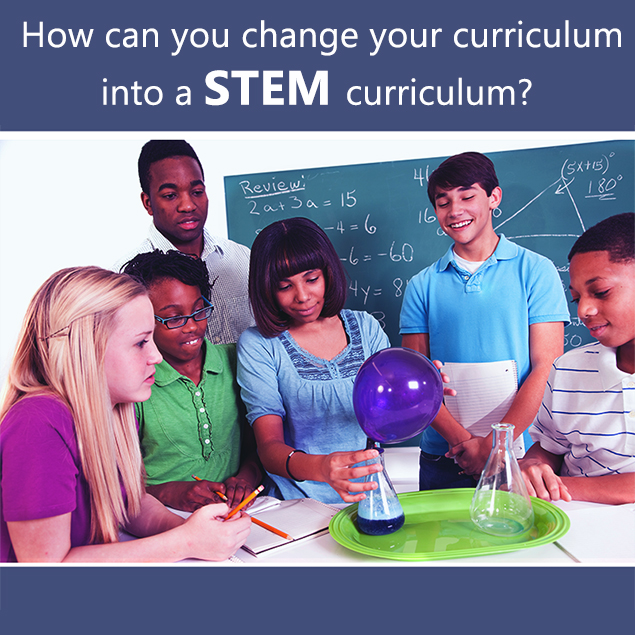Create a STEM-focused Curriculum
Posted by Network Support · Leave a Comment
ASTEM-focused curriculum inspires students to fully explore topics and develop creative solutions to real-world problems…
STEM (Science, Technology, Engineering, and Math) is a discipline that is extremely important for students to learn today. As students grow in the fields of STEM they are able to learn interdisciplinary skills that apply to real world situations. This makes successful students as well as successful citizens.
Integrating STEM into the classroom does not require a huge budget or curriculum change. Any school, any classroom and any teacher can turn their curriculum into an inspiring STEM-focused curriculum.
Writing a standards-based STEM curriculum is simple. Since all disciplines are easily integrated with science, schools often use these standards at the foundation for all instruction. Most state science standards are separated into four strands: Nature of Science and Engineering; Physical Science; Earth and Space Science; and Life Science. Because there are four strands, it is best to divide the year into four 10-week, interdisciplinary units focusing on each strand. The Nature of Science and Engineering standards, however, are woven into all units in order to keep these skills key components of instruction. Purposeful planning by the teachers enables students to fully explore topics and develop creative solutions to real-world problems. There are 3 main steps in this planning process that are discussed below:
- Access the Standards
The first step in the process of implementing STEM into a curriculumis to access the Common Core Standards. The best place to find the science standards, in electronic formats, is at the state’s department of education website. Since these standards are the foundation for the entire year’s curriculum, it is important to know them well.
When incorporating STEM into the yearlong curriculum, make sure to analyze the standards, understand what motivates students, and use the best practices on how students learn science to scaffold skills throughout the year.
- Inspire Interest
The next step in implementing STEM into a curriculum is to find a “hook” for each unit to engage learners. For each lesson there should be a “hook” that draws the students in. Every lesson should have a real world connection that inspires students to think outside of the classroom. Thus, after finding the “hook,” connect the selected standard with unit being taught.
- Collect Resources
While incorporating STEM into a curriculum, begin thinking about interdisciplinary connections and start collecting resources to help students make these connections to the lesson being taught. This provides integrated instruction that is STEM-focused. Resources can include, books, people, field trips, projects and websites. Organizing resources now, saves valuable time when teaching the units later.
It is simply the matter of using current resources in a new to make STEM the connection for all instruction.
Like this article for teachers?
Browse the Professional Learning Board COURSE CATALOG to find related online courses for teachers in your state. Professional Learning Board is a leading provider of online professional development classes that teachers use to renew a teaching license or renew a teaching certificate.





